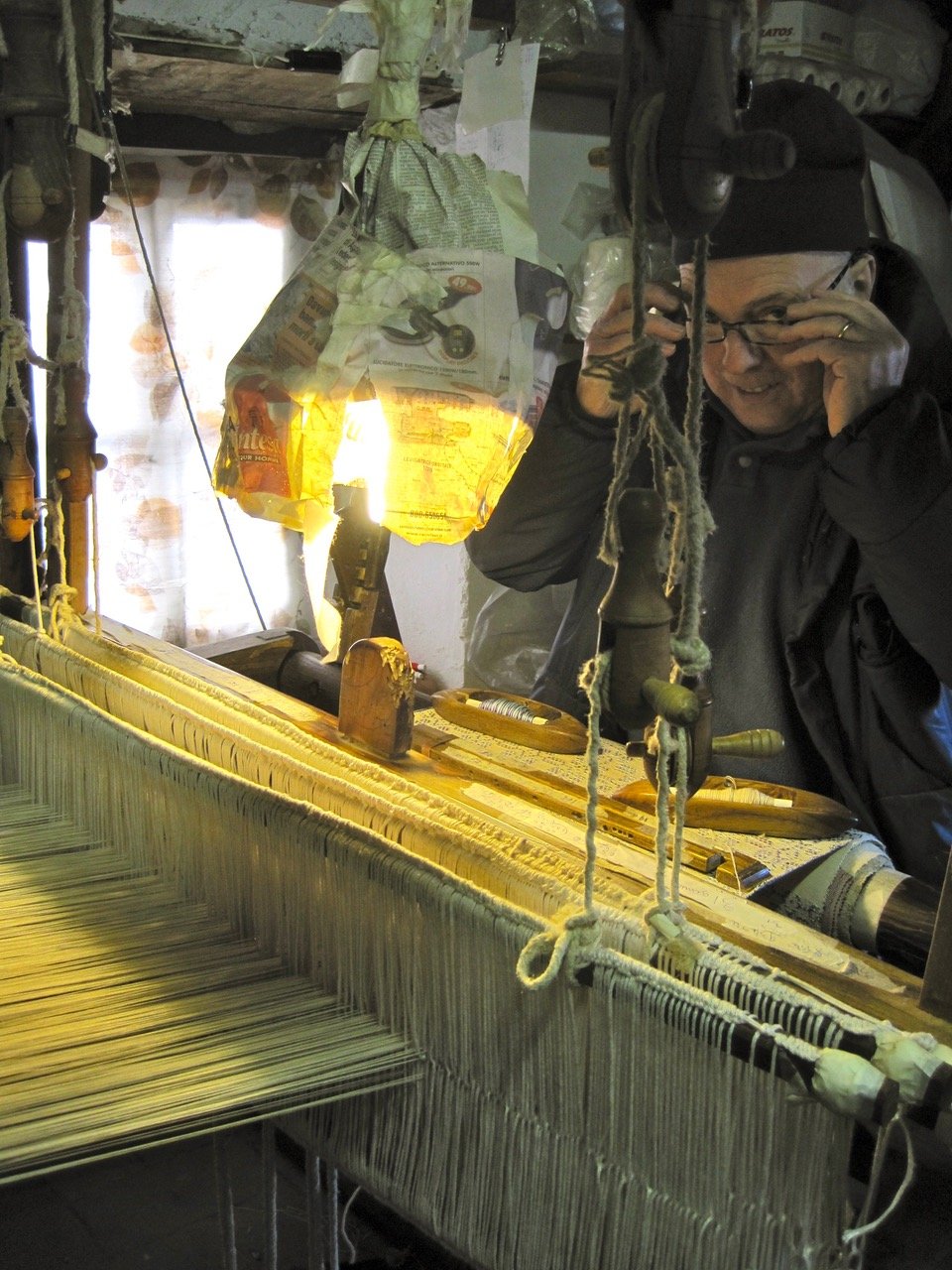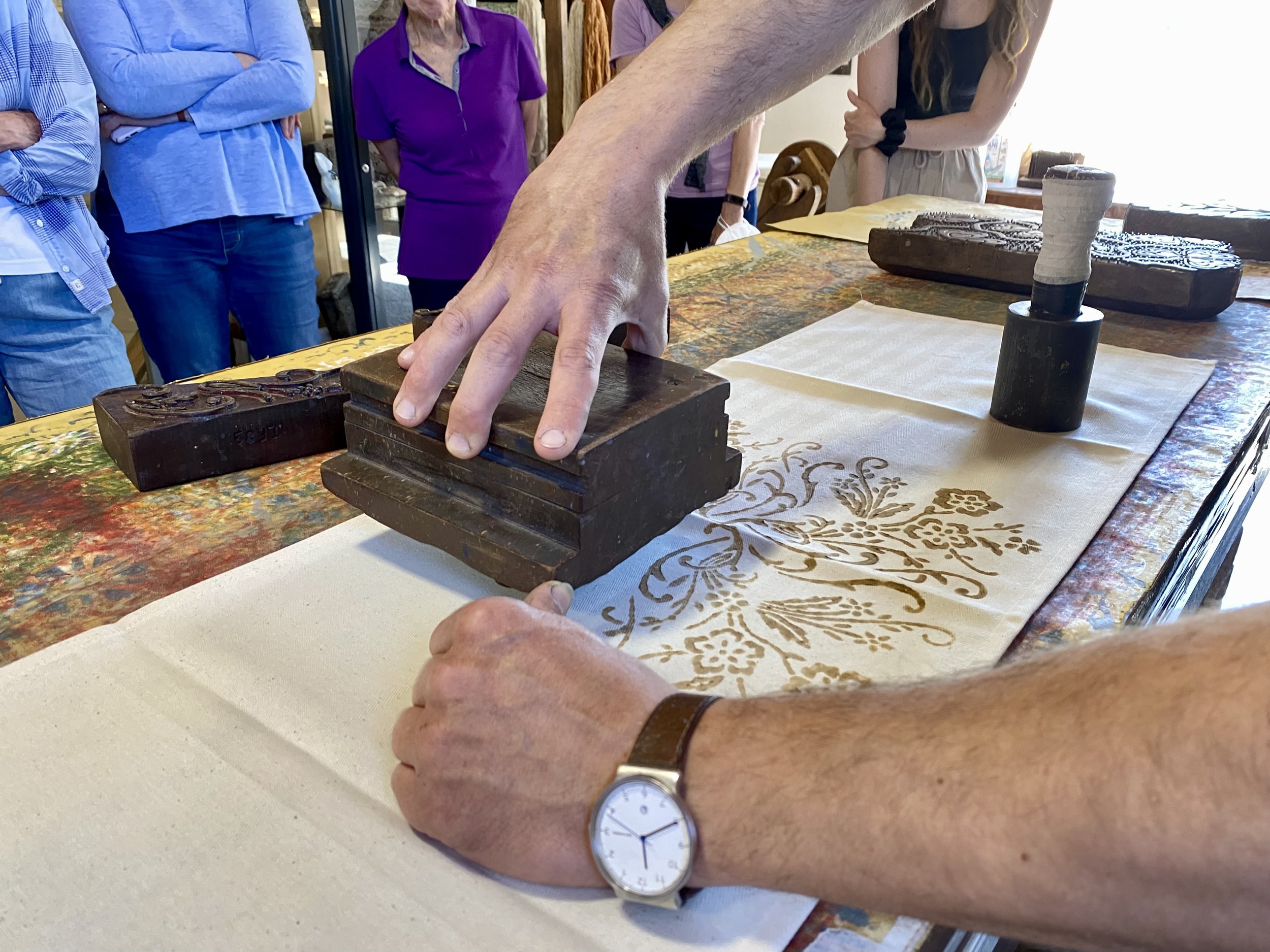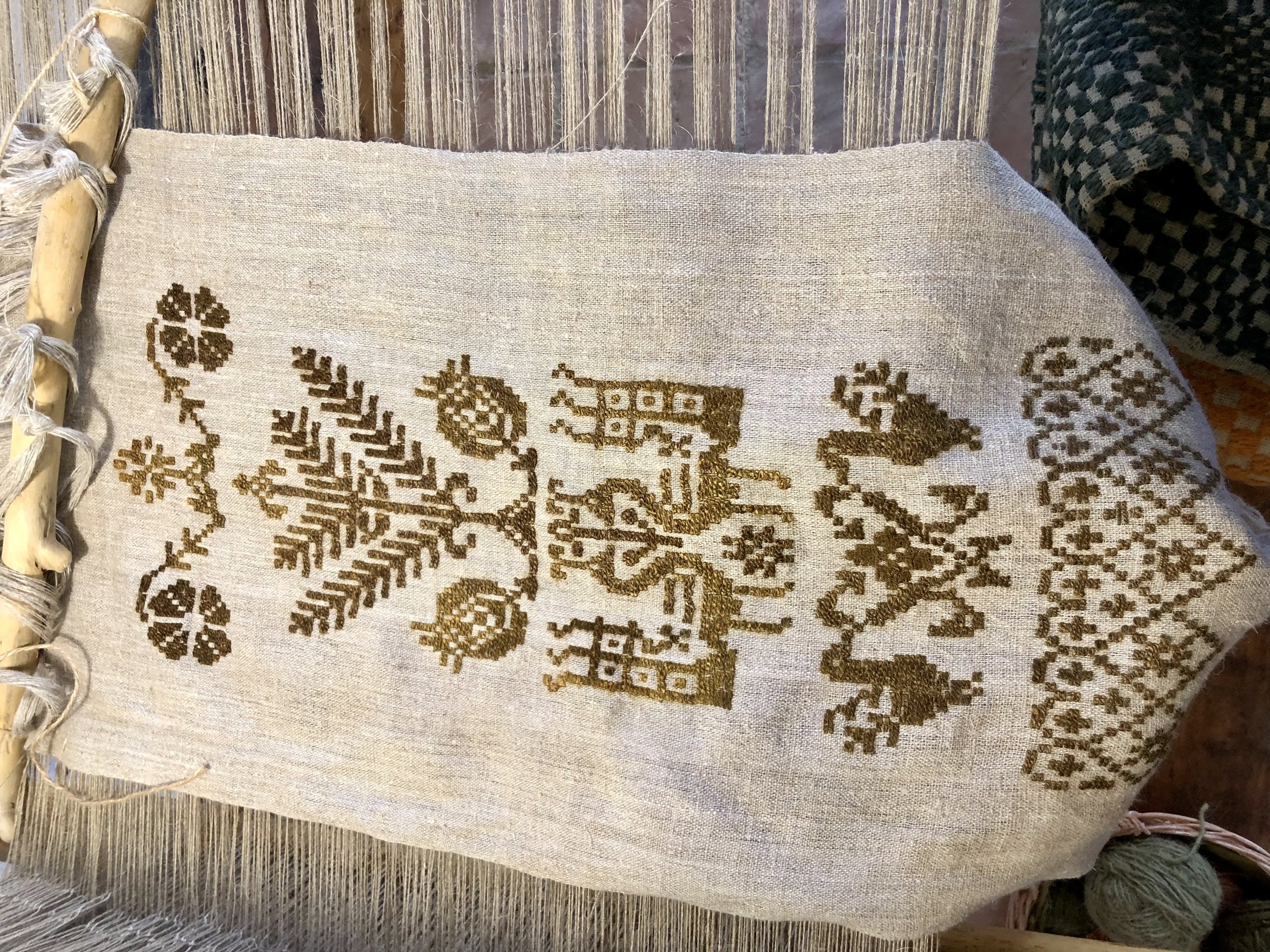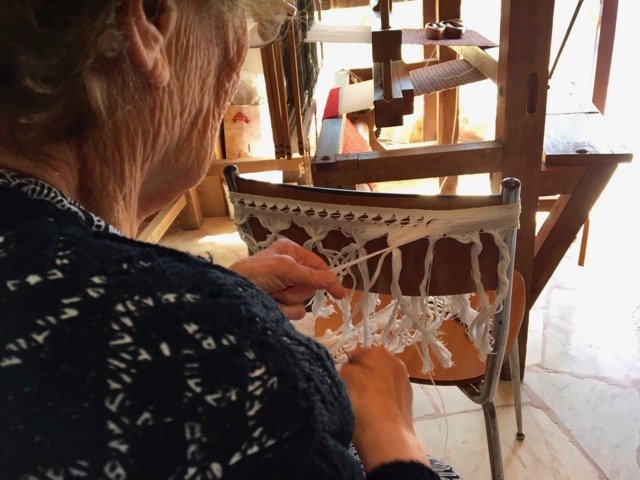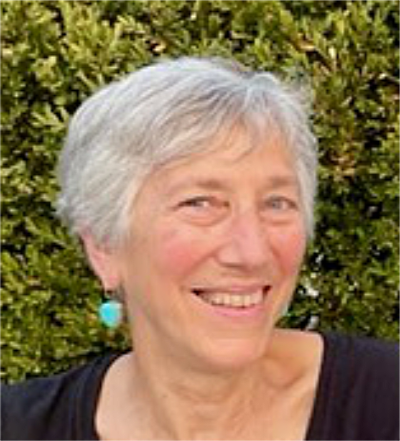Morning (11AM): “Keeping Italian Textile Traditions Alive”.
(Afternoon Program: Annual Sale Setup)
Mountainous regions of central Italy were the highways of the past for sheep herders, pilgrims and merchants (not to mention armies). When Italy rapidly industrialised in the post-Second World War era, these areas were largely cut off from the main economic development. As a result, traditional culture remained largely intact until the late 1950s and 1960s. When I arrived in the Serchio River Valley in Lucca Province in 2004, I met spinners, weavers and other textile workers who had learned their craft from mothers and grandmothers who had learned in the same way, possibly extending back to Etruscan, Bronze Age and even Neolithic times. Only recently had they ceased to cultivate hemp and process it themselves. There were women who remembered going to school with silk cocoons in their camisoles to keep them warm. While weaving household linens and carpets, they were also weaving history. This situation struck me as very different from England where home weaving had more or less died out with the advent of the industrial revolution in the late 18th century and had to be rediscovered by 20th-century craftspeople and promoted by the now active network of guilds.
I will speak about ten people and three institutions which are or were until recently actively carrying forward these traditions. They come from Lucca Province (Tuscany), Pistoia Province (Tuscany), Montefeltro (Le Marche) and Sant’Antioco (Sardinia) and include hemp, silk velvet and brocade, bissu (sea silk), rust printing, marsh reed weaving and watermarked paper.
Tourists come to Italy for many reasons, but hardly ever do they come to see these barely visible remnants of a once thriving textile industry. I hope to pique your curiosity about it and entice you to make the trip to meet these inspirational people.
I was born in the States, but moved to Cambridge (England) in 1967. By 2004 I had already had careers as an archaeologist, orchestral manager, book editor and part-time cook in a restaurant. I loved everything to do with food and wanted to make it central to my next career, but had no idea how I could do it. I came to Lucca (Tuscany) for six months hoping inspiration would strike. I participated in the olive harvest and experienced the excitement of the new oil pouring out in the olive mill. Friends came to visit and one couple, as they were leaving, said it was the best holiday they had ever had. That was the eureka moment. I decided to create tours taking people like me to experience rural Italian life, while also investing in the rural economy. I started searching for food artisans, small family producers who hadn’t succumbed to the lure of industrialisation. On the hunt, I kept tripping over textile craftspeople—weavers, spinners, knitters, embroiderers—people eager to show me what they were doing. I invited a friend of mine from Cambridge, who was a weaver and lately specialising in passementerie, to visit. I took her to visit the textile people I had found and asked whether she thought they might be of interest to other people like her. Her answer was yes, and my Tastes & Textile tours were born in 2011. My textile experience? I used to sew most of my own clothes and knitted a little. Now I channel my creativity into designing tours during which I share what I’ve discovered with others. I am always learning from my Italian craftspeople and my guests from all over the world.

